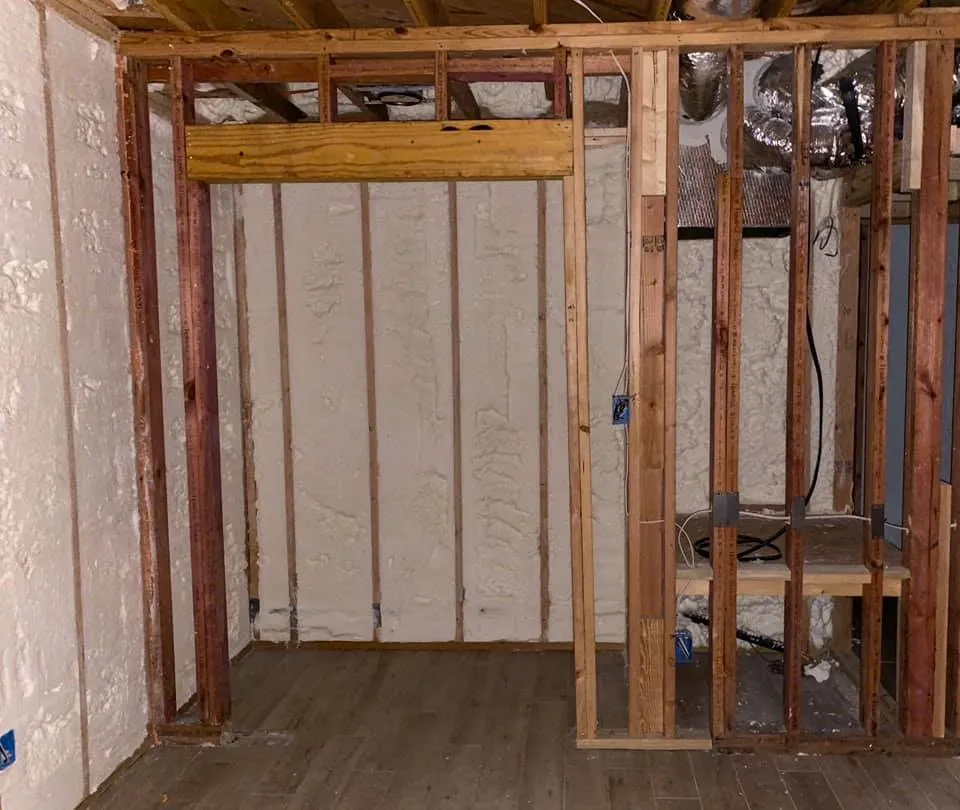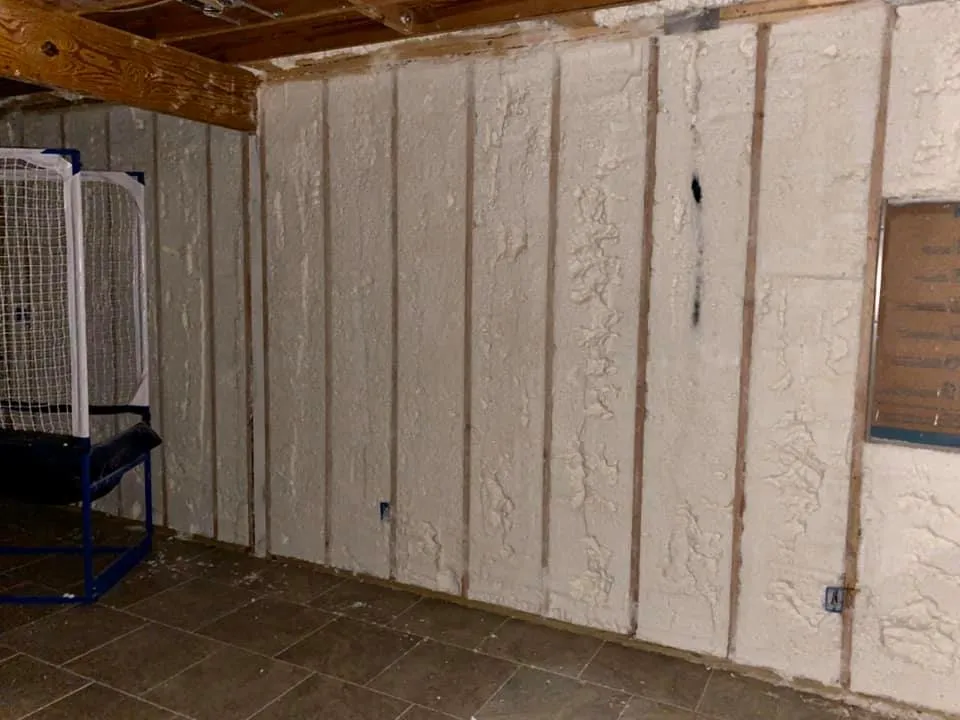If your home has blow-in insulation, you may be thinking of hiring experts in blow-in insulation removal to remove and replace it with more efficient insulation like spray foam insulation. You are not alone. As homeowners, it is normal to always be on the lookout for the most efficient and cost-effective ways to improve our living spaces. Spray foam insulation appears to be one such way, as it has a reputation for offering excellent insulating properties. Its ability to seal gaps and prevent heat loss makes it an efficient way of saving energy bills.
If this is your first time dealing with spray foam insulation, it is normal to have some questions. An essential question that arises in the context of spray foam insulation installation is whether it needs to be covered. But before we do, let us help you understand the basis of spray foam insulation.
What Is Spray Foam Insulation
Spray foam insulation—an amazing insulation technology, stands as a transformative solution that boosts energy efficiency and indoor comfort. Spray foam insulation is a chemical compound created by combining two components: polyol resin and isocyanate. The combination forms a liquid substance that, when sprayed, reacts and expands rapidly, forming a dense foam with exceptional insulating properties. This expansion allows the foam to seep into every nook and cranny to create an airtight seal that effectively blocks heat transfer.
Benefits Of Spray Foam Insulation
If you’re considering spray foam insulation for your home, some benefits to expect include;
Superior Insulation Performance
The key advantage of spray foam insulation lies in its exceptional insulating properties, represented by its high R-value. R-value measures an insulating material’s ability to resist heat transfer, and spray foam boasts one of the highest R-values among insulation options. This means that it provides superior thermal resistance, effectively blocking the exchange of heat between the interior and exterior of a building.
Energy Efficiency and Cost Savings
The air-sealing properties of spray foam insulation translate directly into improved energy efficiency. Spray foam reduces the workload on heating and cooling systems as it prevents conditioned air from escaping and outside air from infiltrating. As a result, homeowners can experience substantial savings on their energy bills, particularly in extreme climates where temperature fluctuations are common.
Though the upfront cost of spray foam insulation installation may be higher than traditional insulation methods, the long-term energy savings make it a wise investment that pays for itself over time.
Seamless Application
One of the standout features of spray foam insulation is its versatility in application. Professional installers use specialized equipment to apply the liquid foam, which then expands to fill and seal even the smallest and hard-to-reach spaces. This ability to conform to any surface or shape makes it ideal for insulating irregular spaces, such as attics, crawl spaces, and around pipes and wiring.
Unlike fiberglass insulation, which requires precise cutting and fitting, spray foam application is relatively quick and straightforward, saving time and labor costs during installation.
Moisture and Mold Resistance
Closed-cell spray foam insulation, with its dense structure, acts as an effective moisture barrier. It helps prevent water vapor from entering the building envelope, reducing the risk of moisture-related issues like mold and mildew growth.
Moisture infiltration can not only damage the building structure but also lead to health problems for occupants. Spray foam insulation’s resistance to moisture makes it a valuable asset in maintaining a healthy and comfortable living environment.
Should Spray Foam Be Covered
Though sprayed as a liquid, spray foam insulation dries to create a solid coating that forms an extra layer on the wall. It often appears rough when dry; hence, there is no need to debate whether or not it should be covered in living spaces like bedrooms, living rooms, bathrooms, and other commonly used places. But, in less visited places like the attic and the basement, it is also advised always to keep your cured spray foam insulation covered. The reason is this; spray foam insulation is made from highly inflammable chemicals; hence, the tiniest spark near a cured spray foam insulation is capable of starting a fire.
Also, in areas where the likelihood of exposure to fire is minimal, you should be cautious of exposing spray foam insulation to moisture. Moisture can ruin spray foam insulation over time, and you’ll need to reinvest in installing a new one.
What Are The Appropriate Coverage For Spray Foam Insulation
Spray foam insulation does not necessarily need to be covered, but it often depends on the specific application and local building codes. Here are some considerations:
Fire Retardant Paint
Fire retardant paints are special coatings that are meticulously engineered to adhere to the surface of the spray foam insulation, creating a formidable fire-resistant barrier. Comprising fire-retardant materials, these coatings act as an effective shield that impedes the spread of flames in the unfortunate event of a fire outbreak. Fire retardant paints are designed in limited colors; they mostly come in white, black, or gray. This means you might have limited options to blend with the color theme of your home. Nonetheless, it would be best if you kept in mind that some building codes and regulations mandate homeowners to use fire coatings.
Thermal Barriers
Beyond fire concerns, another crucial aspect of appropriate spray foam insulation coverage revolves around thermal barriers. Building codes and regulations in specific regions mandate the use of thermal barriers as an added layer of protection, particularly in areas where the foam is exposed to the living space.
Imagine a scenario where a fire unexpectedly breaks out. A thermal barrier serves as a vital buffer, granting occupants crucial time to evacuate safely. This fire-resistant layer, installed between the spray foam insulation and the living area, effectively slows down the spread of fire as it acts as a life-saving measure in times of emergency. While closed-cell spray foam insulation boasts inherent fire-resistant properties, it’s essential to recognize that open-cell spray foam and foam used in certain locations might necessitate thermal barriers to align with local safety requirements.
Commonly fashioned from fire-resistant materials such as gypsum board or drywall, these thermal barriers not only provide enhanced protection against fire but also lend structural integrity to the building as a whole, further fortifying the home against potential hazards.
Fire coatings and thermal barriers further bolster the efficiency of spray foam insulation. When you subscribe to this well-rounded approach to insulation protection, you can bask in the exceptional benefits of spray foam insulation while prioritizing the safety and security of lives and properties in your building. If you have any more questions about spray foam insulation, you can visit https://stellrr.com/insulation-removal-austin/





